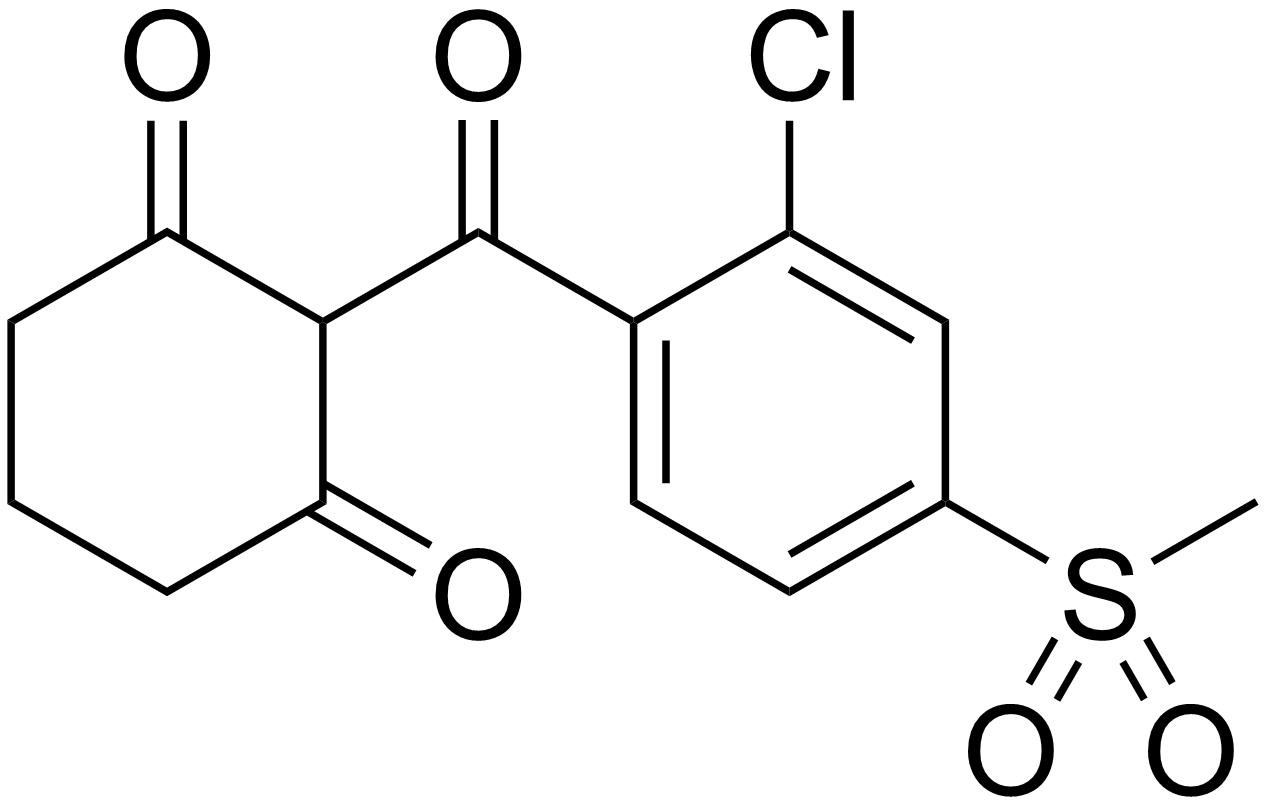User:Chemager/Sandbox
Discovery and Development of p-Hydroxyphenylpyruvate Diooxygenase (HPPD) Inhibitors as Herbicides and Pharmaceuticals
[edit]All of the herbicidal and pharmaceutical triketone HPPD inhibitors including mesotrione (Callisto)(I)1, sulcotrione (Mikado)(II)2 and nitisinone (Orfadin)(III)3 had their common origin in the
I II III
observation in 1977 by Reed Gray, a biologist at Stauffer Chemical’s Western Research Center (WRC) in California, that few weeds emerged under bottlebrush plants (Callistemon citrinus) in the back yard of his house. To investigate this effect, he took soil from underneath these plants and extracted and fractionated it. The resulting extracts were applied to soil flats containing watergrass ( Echinochloa crusgalli ) as an indicator species at the very high application rate of 100 lb./acre. There was a herbicidal effect from this test, so the extracts were developed on a preparative thin layer chromatographic sheet. The same Echinochloa Crusgalli seeds were placed on this sheet and germinated. The active ingredient was identified by bleaching symptoms on the test species. The area where the herbicidal activity was seen was extracted and he submitted the isolated active ingredient to Ken Cheng at the Western Research Center who, using proton NMR, IR and mass spectroscopy identified the structure as being that of Leptospermone (IV) which was known as a natural product2 derived from the steam-


